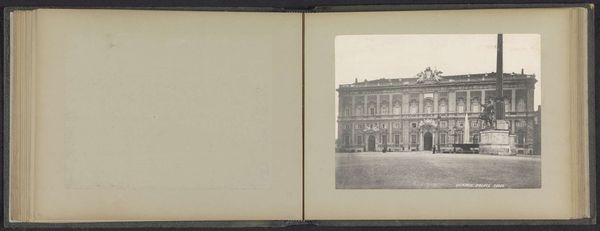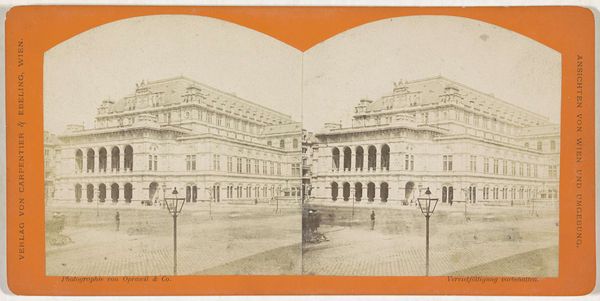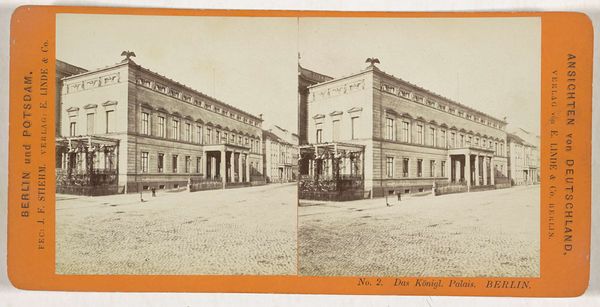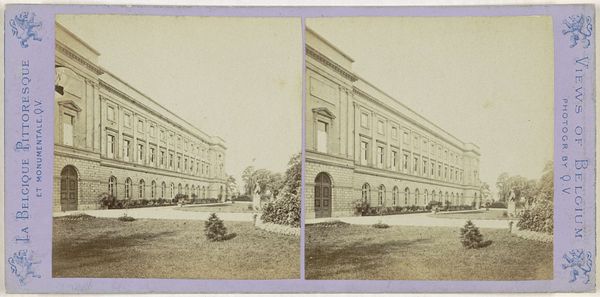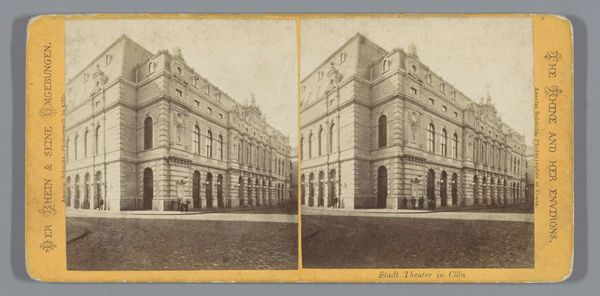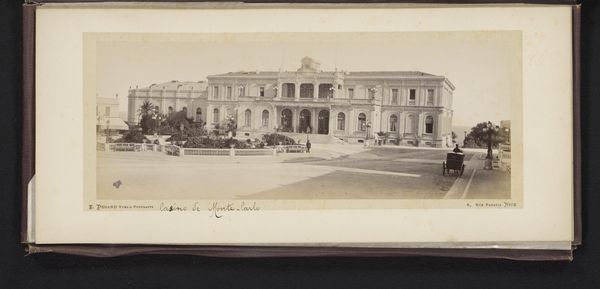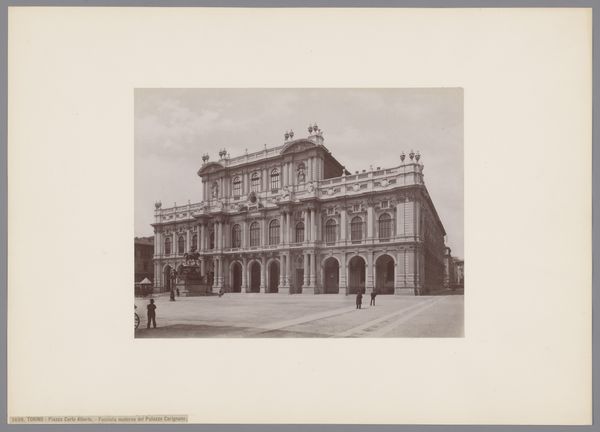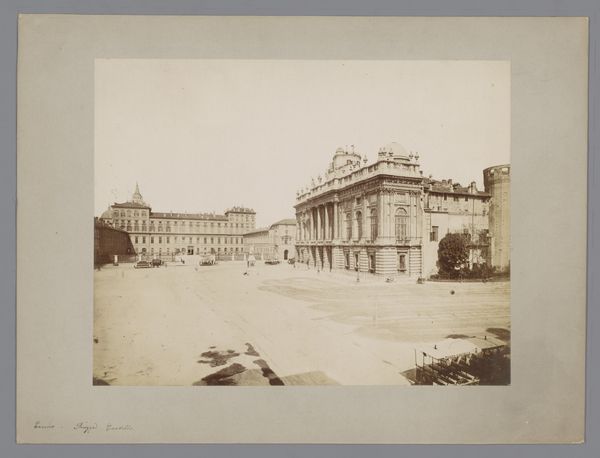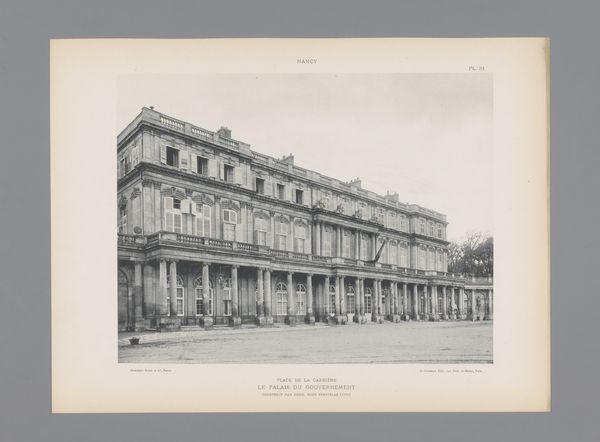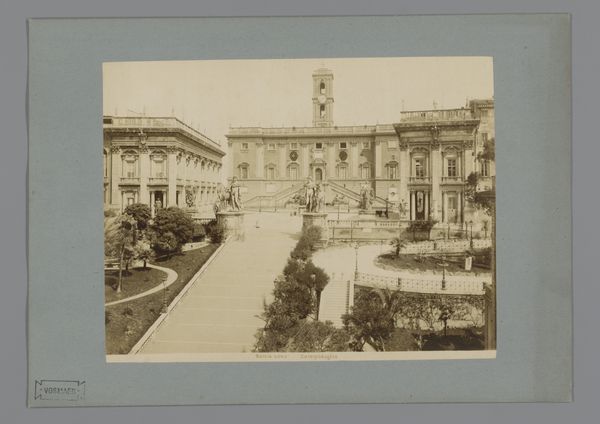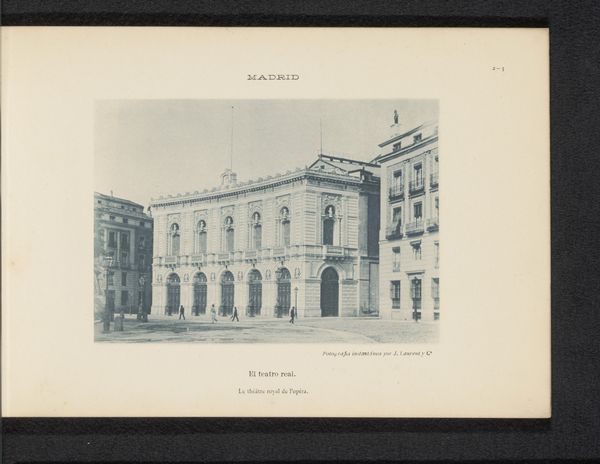
photography, gelatin-silver-print
#
landscape
#
photography
#
orientalism
#
gelatin-silver-print
#
cityscape
Dimensions: height 125 mm, width 188 mm
Copyright: Rijks Museum: Open Domain
Editor: This is "Gezicht op militaire barakken," or "View of Military Barracks," a gelatin silver print by Henry William Cave, circa 1890-1910. It seems to depict two imposing, colonial-era buildings. What strikes me is the stark, almost propagandistic feel. How do you interpret the image’s presentation of military architecture? Curator: You've astutely picked up on the almost propagandistic feel. The photographs are not just views; they’re carefully constructed images meant to project power. Consider the context: Cave was documenting British colonial spaces in Ceylon, now Sri Lanka. What purpose might these images serve back in Britain? Editor: Well, they would visually reinforce the empire’s strength and presence. They make colonial authority look established, ordered, almost…permanent. Was photography used often in this way? Curator: Absolutely. Photography in the late 19th century played a crucial role in shaping perceptions of the colonies. It wasn't simply about recording reality; it was about creating a particular narrative. The way these buildings are framed, the scale emphasized…it all suggests control and dominion. Are these images for a Ceylonese audience, or the colonizers? Editor: Definitely the colonizers! It's almost like visual reassurance for them. I guess it gives some sense of progress and accomplishments, even though it's likely covering up all sorts of exploitative actions. Curator: Precisely. And by presenting these images back in Britain, what effect might that have on potential investors, soldiers, or even just public opinion? Editor: It normalizes colonial occupation, perhaps even romanticizes it. The clean lines, the order... it all makes it seem appealing. I hadn't thought about photography as a political tool in quite that way before. Thanks, that helps unlock so much about what the picture is saying! Curator: The power of the visual is immense. Now consider how that legacy continues to shape our understanding of that period.
Comments
No comments
Be the first to comment and join the conversation on the ultimate creative platform.
